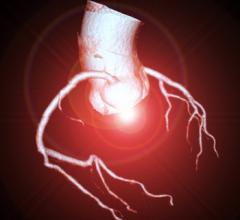August 14, 2007 - High-speed dual-source computed tomography (DSCT) angiography was 95 percent sensitive and 95 percent specific in detecting significant coronary lesion, on a segment-by-segment analysis, according to the report published in the August 21 issue of the Journal of the American College of Cardiology.
The study, which tested the sensitivity of DSCT for identifying coronary stenosis in patients with angina or unstable coronary disease, noted that earlier CT scanners had limited temporal resolution and produced motion artifacts, making it difficult to evaluate coronary lesions.
Led by Dr. Annick C. Weustink, from Erasmus Medical Center in Rotterdam, the Netherlands, researchers used DSCT to assess coronary disease in 100 symptomatic patients. The findings were compared with the results of conventional coronary angiography. The average scan time was just 8.58 seconds and the average heart rate was 68 beats/minute, the report indicates. Conventional angiography revealed multivessel disease in 46 per cent of patients, single-vessel disease in 31 per cent, and no significant disease in 23 per cent. Overall, 1489 coronary segments with 220 significant lesions were available for analysis with DSCT, the report indicates.
DSCT angiography “demonstrated a high diagnostic accuracy for the detection or exclusion of significant stenoses in patients with various heart rates without exclusion of unevaluable segments,” the authors stated.
For more information: http://content.onlinejacc.org/


 December 11, 2025
December 11, 2025 









